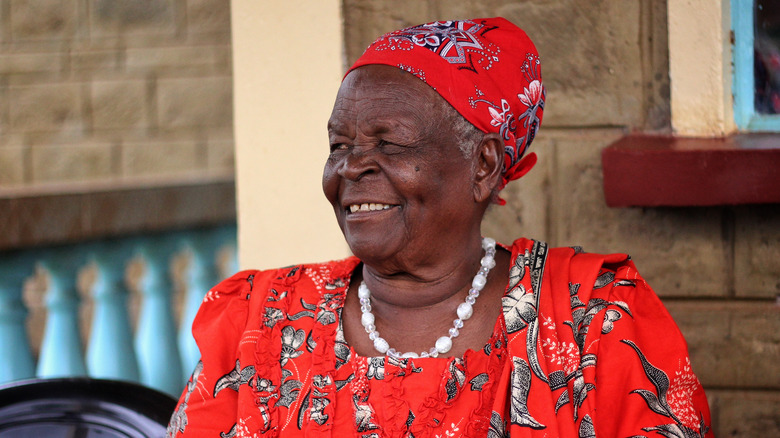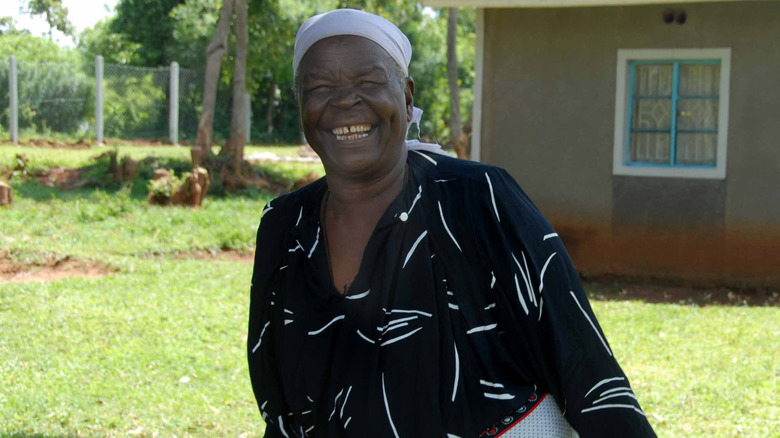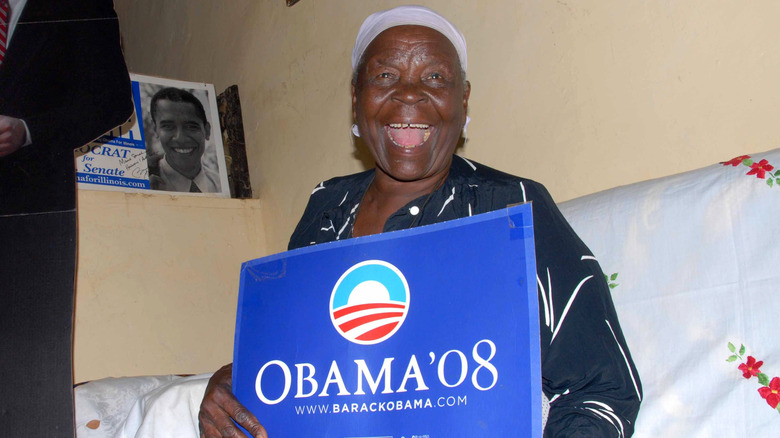The Inspiring Story Of Barack Obama's Late Step-Grandmother 'Mama Sarah'
Barack Obama has an extensive extended family, including eight half-siblings. After Barack's parents divorced in 1964, he spent his childhood with his mother, Ann Dunham, and her side of the family. When he was 10, Barack moved back to Hawaii, where he was born, and lived with his maternal grandparents for a few years until his mother rejoined him.
The former president didn't get to know his relatives on his father's side until he was an adult. When he was in his 20s, Barack met his older half-sister, Auma Obama. The two siblings quickly bonded. Since Barack had numerous questions and wanted to learn all about his paternal relatives, Auma invited him to Kenya to meet them in person. During this 1988 trip, Barack connected with his step-grandmother, Sarah Obama. Even though Sarah had never met her step-grandson before, she had seen pictures of him throughout his childhood. Years after Barack's initial visit, she vividly recalled her step-grandson pitching in to help her while she took a trip to the local market. Barack called her "Granny," and she played a crucial role in his life. "It was Granny who served as a bridge to the past, and it was her stories that helped fill a void in my heart," he wrote in an Instagram tribute to his step-grandmother.
Sarah, who was also known as "Mama Sarah," died in 2021 at age 99. Besides inspiring Barack, she was also a role model and staunch advocate for education In her community.
Sarah Obama was an award-winning promoter of education
Since Sarah Obama didn't have access to formal educational opportunities as a young person, she was passionate about helping the children in her life get to school. When her stepson, Barack Obama Sr., was a child, she traveled six miles from home via bicycle every day to take him to school. Besides transportation, Barack Obama believes his step-grandmother's emotional support was key to his dad's success. "It was in part thanks to her love and encouragement that he was able to defy the odds and do well enough in school to get a scholarship to attend an American university," Barack recalled on Instagram after Sarah died.
Sarah expanded her efforts beyond her family to help widows and orphans pursue education. In addition to subsidizing tuition costs, Sarah also provided these students with books and other school supplies. She also kept in touch with them as they went on to higher education. "It's my joy to see them in the universities about to graduate," she informed NPR. "There's a lot of success stories, and it just makes me happy and it keeps me going."
In 2014, when she was 94, Sarah was honored for her efforts with the United Nations' first-ever Women's Entrepreneurship Day Education Pioneer Award. At the time, her Mama Sarah Obama Foundation was in the process of raising money for an early childhood development center, renovating two local schools, and building a vocational-technical facility.
Sarah Obama saw the power of education in Barack's achievements
After Barack Obama's first visit to Kenya to meet his step-grandmother, Sarah Obama, the two kept in touch. While Barack was still a student, he arranged for Sarah to visit him in the U.S. As Barack made a stunning transformation and became a U.S. senator and then 44th president, he visited Sarah in Kenya in 2006, 2015, and 2018.
Even during the early days of the 2008 presidential primaries, Sarah paid attention to how her step-grandson was doing, watching election results on a TV provided by a family friend. After Barack won the presidential election in 2008, Sarah returned to the United States to attend his 2009 inauguration. "It makes me happy. He worked hard." Sarah recalled to VOA Africa. "Look what education can do for you, look at my grandson ... I'm proud of him."
2009 was also a pivotal year for Sarah's work since it was the year she officially launched the Mama Sarah Obama Foundation. To support the foundation's mission of providing education for young people, Sarah utilized both the profits and crops from her farm. Besides paying for items like tuition, Sarah also sold milk, eggs, and fish at a reduced price to local school cafeterias. On her farm, Sarah championed environmentally sustainable, organic practices. For instance, she relied on push-pull farming, a technique that uses naturally occurring plant and insect relationships to keep crops free from pests and pesticide chemicals.


